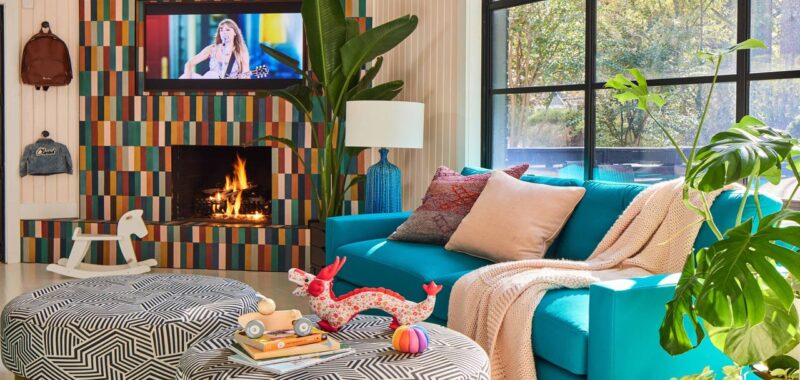It used to be a home, but now it’s “a sterile museum.” That’s how Colleen Bennett, a North Carolina–based designer and founder of CBB Design Firm, describes her current project. Her clients got rid of nearly 30 years of stuff, only to realize they felt vacant in their own home. So they dialed up Bennett to help bring some personality back into the space post-purge. “They realized pretty quickly that they couldn’t completely eliminate everything,” says Bennett.
Ten years ago, minimalism was on the rise in ways previously unseen. In 2015, Time named Marie Kondo one of the world’s most influential people; Netflix released its popular documentary Minimalism the following year. And by the end of the 2010s, a lot of homes looked sleek, modern, efficient—and a bit empty. But some minimalist practitioners, like Bennett’s clients, quickly realized that the aesthetic wasn’t a guarantee of the happiness it promised.
Today there are echoes of a similar minimalist sentiment: Massive purging is on the rise, and trends like “de-influencing” and “underconsumption core” are disrupting TikTok and Instagram feeds, which feast on fast fashion and an e-comm empire. To be clear, these are mostly positive things. There is nothing wrong with living with less, and consuming more consciously is better for the Earth. But as certain minimalist tempers make their way back into popular culture, it’s worth questioning whether life as a more thoughtful consumer has to look like an empty room. Perhaps a happy, healthy home actually needs a junk drawer, random clutter, and lots of, well, stuff. Below, AD talks with three design lovers who went full minimalist about why they made the switch back.
Brian Patrick Flynn
Minimalist from 2015–2023
Without layers of texture and pattern, a room becomes silent. For interior designer Brian Patrick Flynn, that silence was spirit-breaking. The Atlanta-based HGTV designer lives in a 1965 midcentury-modern ranch with his husband, their baby, and dogs. He’s known for his bold, colorful, and playful designs. But in 2015, Flynn and his partner were DINKS (double income, no kids) and wanted to try living in a very “austere home” that was more about celebrating the vintage ranch’s angles.
“What drew me to [minimalism] was the idea of having just the key things necessary to function in a space,” he explains. “I went so far with the whole less-is-more thing that I painted all of the floors and walls in the main spaces ultrawhite and even skipped area rugs to keep the spaces super minimal.”


